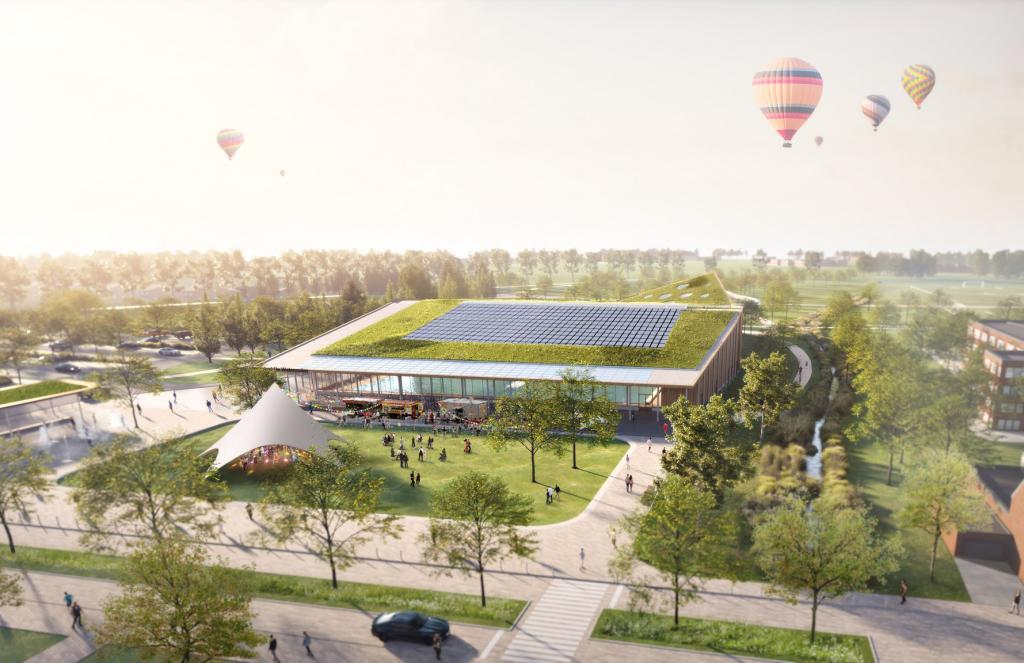Thessaloniki gets ready for its metro launch in November
The underground rapid transit lines have been under construction for almost two decades due to various project delays
 TheMayor.EU logo
TheMayor.EU logo 
The swimming complex promises innovation and recycling of water and waste heat , Source: City of Sint Niklaas on Facebook
Sint-Niklaas aims to build one of the biggest swimming complexes in the Benelux
Yesterday, local authorities in Sint-Niklaas in Belgium, announced the construction of a new massive swimming complex and recreation area, that will be powered entirely by renewable energy. The complex is Sportkringpark and it will be one of the biggest of its kind in the Benelux.
It is aimed to address the swimming facilities shortage in the city and with the project set to complete in 2024, authorities will triple current capacity. The complex will be built through a public-private partnership, with the company ‘Sportkringpark’ having the right to operate the facility for the next 30 years.
At the same time, tickets will be partially financed by the city, meaning that they will remain quite cheap for citizens. The whole project will cost around 35 million euros for the central facility and 2 million for the surrounding area, where the project calls for the construction of a car park and bike lanes.
A swimming pool consumes a lot of energy. The water needs to have a constant temperature and the building also needs to be comfortably warm. In fact, according to the city, due to carbon taxes and rising energy costs, the existing Sinbad swimming pool is the most energy-intensive public building in Sint-Niklaas.
This is why devising a 100% renewable energy system for the large complex was a very important step in the project. Sportkringpark will have to power one Olympic-sized swimming pool, two smaller ones, a wave pool and a baby pool.
On top of that, there will be a water slide park and a Finnish-style sauna. By any stretch of the imagination, that is a lot of infrastructure. So, how do they plan to power the complex?
First of all, it will have a green roof providing some carbon offset, as well as a photovoltaic system. However, in terms of heating, the complex will use a riothermal system, extracting heat from sewage water from the biggest wastewater collector in the city – passing right next to the building.
On top of that, authorities have said they plan to use a low chlorine treatment and recycle as much water as possible, through rainwater collection and filtration systems.

The underground rapid transit lines have been under construction for almost two decades due to various project delays

Now you can get your wine in Talence by paying directly in Bitcoin

That’s because the state has to spend money on updating the railway infrastructure rather than subsidizing the cost of the popular pass

Rethinking renewable energy sources for the urban landscape

The examples, compiled by Beyond Fossil Fuels, can inform and inspire communities and entrepreneurs that still feel trepidation at the prospect of energy transition

Now you can get your wine in Talence by paying directly in Bitcoin

The 10th European Conference on Sustainable Cities and Towns (ESCT) sets the stage for stronger cooperation between the EU, national and local level to fast track Europe's transition to climate neutrality.

At least, that’s the promise made by the mayor of Paris, Anne Hidalgo

The underground rapid transit lines have been under construction for almost two decades due to various project delays

At least, that’s the promise made by the mayor of Paris, Anne Hidalgo

Hostal de Pinós is located in the geographical centre of the autonomous region

Despite its church-y name, the district has long been known as the hangout spot for the artsy crowds

Urban dwellers across the EU are having a say in making their surroundings friendlier to people and the environment.

Forests in the EU can help green the European construction industry and bolster a continent-wide push for architectural improvements.

Apply by 10 November and do your part for the transformation of European public spaces

An interview with the Mayor of a Polish city that seeks to reinvent itself

An interview with the newly elected ICLEI President and Mayor of Malmö

A conversation with the Mayor of Lisbon about the spirit and dimensions of innovation present in the Portuguese capital














